|
0 Comments
What you can do about the silent killer in construction that no one talks about – Suicide.29/3/2018 Recently it was reported that in Western Australia an average of 33 people in the construction industry took their own lives every year. In one year alone there were over 600 suicide attempts with more than 100 leaving the person with a permanent disability. To put this in context the state only has a population of 2.5 million people. Now I couldn’t find similar statistics in the United States but did find that every year around 43,000 people kill themselves and that people in the construction and mining industries rank with the second highest suicide rate of 53 workers per 100,000 which means that in the United States; for every 2,000 construction workers, 1 will kill themselves every year. These are frightening statistics that very few talk about. Safety is usually taken seriously on our construction projects, yet suicides kill and permanently maim countless people every year. Why are suicide rates so high in construction?There are very few studies to the reasons for high rates of suicide that I’ve seen, but my theories are: 1. Construction is a cyclical industry with times of little work. Many are employed for a particular project, then when their portion of work is finished they have to move on and find other work. This creates enormous stress knowing that you’ll soon be out of work and looking for another job. Who is going to look after the family then? Often construction workers sit at home with no work feeling worthless for weeks and even months. 2. Construction is very much a hire and fire industry with little continuity and low loyalty. Again this creates stress. 3. Of course being cyclical puts enormous pressure on management and company owners who have to be continually looking for new projects, wondering how they’ll pay wages, equipment instalments and office rentals. Submitting prices for projects can be very stressful – have you got the right price, have you forgotten something? And then the disappointment of losing one project after another. Even though I worked for a very successful construction company our project win rate was only 1 for every 10 projects we priced! 4. Daily we hear of clients not paying contractors, contractors not paying suppliers and subcontractors. Company owners have committed suicide when they’ve been unable to pay their employees because a client hasn’t paid them. 5. Frequently contractors become bankrupt, sometimes because of poor management, other times because of greed and thieving. The end of the day who suffers – the poor workers and suppliers who don’t get paid. The stress of not being paid what’s due to you can lead to suicide. 6. Construction workers often work long hours and on weekends. They barely see their families, and when they do there are often arguments about the long work hours. A stressful home life often leads to divorce, despair and even suicide. 7. Construction workers often work away from home for long periods. Again this can lead to marriage problems. But these times away from home can lead to loneliness, time to think dark thoughts and often ends in drink and drugs. 8. Most jobs on a construction project demand good health and some degree of physical strength. An injury, or even a sore back, can quickly end a career in construction. Fighting illness or pain daily just to keep working can be an enormous burden that can cause suicide. 9. Construction is very much a man’s World. You have to be seen to be tough. Any weakness is often pounced on by fellow workers. There is little sympathy. 10. Bullying is sometimes rife on some projects. What can we do to get rid of this killer in construction?1. Awareness is important. Knowing about the problem means we are more likely to notice when someone’s mood changes. Awareness might also cause us to do things differently – maybe act in a more considerate way to our fellow workers. 2. It would be useful if governments and states helped make construction less cyclical – maybe scheduling their projects for the time when the construction industry is depressed. Doing this they’ll also get more for their Dollar since construction, material and equipment prices rise when there’s lots of work and falls when work is scarce. 3. Clients and contractors that don’t pay are killing the construction industry, but they are also literally responsible for the deaths of people in the industry. If someone’s delivered the project to the required quality pay them on time. Why should some benefit unfairly from others’ misery? 4. Try to minimise long hours and overtime on your projects. Workers deserve to spend time with their families. They deserve to be home on weekends. Everyone needs a rest. 5. Those that have to work far from home shouldn’t have to spend weeks away and then return only for infrequent rushed breaks. 6. Bullying should never be tolerated under any circumstances. 7. Project managers and supervisors must be aware of signs when things don’t seem right with a colleague or worker. Maybe they have mood swings, they are depressed. Take the time to talk to someone when they seem upset, quiet, moody or not their usual selves. Just being able to share problems with someone can often help. 8. Ensure counselling is available to workers. Contact details of councillors should be displayed on project notice boards. 9. Remember our employees aren’t machines – they need time off, they need time with their families. 10. Of course, equally important is to consider our own situations. Don’t take problems personally. Learn to reduce stress. Learn to talk about and share problems. Work together to stop suicides in constructionDon’t let the scourge of suicides stalk your project. It is preventable. Suicide is never a solution and invariably it results in untold problems and misery for those left behind. It is also important to consider the number of people whose suicide attempts don’t kill them but leave them with a permanent disability. Ensure you take care of your health and the health of those working with you. Let’s look out for each other. Have you been impacted by the suicide of a friend or co-worker? This article was first published on the ClockShark website.
Please share this post To read more about the author’s books and find out where you can purchase them visit the pages on this website by clicking the links below: 'Successful Construction Project Management: The Practical Guide' 'Building a Successful Construction Company: The Practical Guide' 'Construction Claims: A Short Guide for Contractors' 'Construction Project Management: Tips and Insights' 'Construction Management: From Project Concept to Completion' 'Construction Book reviews' To read more about the author visit the page 'Paul Netscher' Want to contact Paul Netscher please enter your details on 'Contacts' Find out how Paul Netscher can help you An untidy project is invariably an unsafe project. You’ve probably heard this many times before, but it’s usually true. Materials, tools and equipment, stored and stacked untidily, results in dangerous situations and often accidents. An untidy project site can result in:
Materials and tools left lying around the project get damaged, lost or stolen, which impacts productivity and costs money to repair or replace. Searching for misplaced tools wastes time. #construction safety #construction productivity #constructionmanagement "A tidy construction site gives the impression that the project is well organised and managed." Is your construction project tidy?Enforce good housekeeping from the start of the project because it’s difficult to change people’s poor habits part way through. It’s often just as easy to stack an item neatly, as it is to throw it randomly on the ground, and it doesn’t take any longer to put an item of equipment back into its storage container than leave it lying around. Is your project site tidy? Does your team look after their equipment and materials? This article was first published on the ClockShark website.
Please share this post © 2018 This article is not to be reproduced for commercial purposes without written permission from the author. To read more about the author’s books and find out where you can purchase them visit the pages on this website by clicking the links below: 'Successful Construction Project Management: The Practical Guide' 'Building a Successful Construction Company: The Practical Guide' 'Construction Claims: A Short Guide for Contractors' 'Construction Project Management: Tips and Insights' 'Construction Management: From Project Concept to Completion' 'Construction Book reviews' To read more about the author visit the page 'Paul Netscher' Want to contact Paul Netscher please enter your details on 'Contacts' Find out how Paul Netscher can help you Negative cash flow probably causes more construction companies to run into financial trouble, often leading to bankruptcy, than any other cause. Even a profitable project can cause contractor’s financial problems if the cash flow is negative. Negative cash flow is when the contractor is paying money to suppliers, equipment hires companies and subcontractors, or in wages and salaries, before the client has paid for the work that has been completed. Unfortunately, most construction projects are cash negative to some extent. Many clients hold 10% cash retention until the end of the project when this is reduced by half and the balance may be paid months later. Consequently, if the project is priced with a profit of less than 10% then the project will be cash negative until the end. In addition, most clients only pay the contractor thirty days after the contractor submits an invoice. These invoices are normally submitted at the end of each month. Many contractors pay their workers fortnightly or in some cases weekly. This could mean the contractor has paid out up to seven weeks of wages before the client pays for the work that these employees have completed. Smaller contractors sometimes have to pay suppliers before they will release materials, yet the contractor’s client only pays for these materials after they have been fixed in place – and then only 30 days after the contractor invoiced for the work. There are, however, a number of other factors that make the cash flow situation even worse. Many projects have payment terms longer than thirty days. In addition, some clients habitually pay progress claims late. Of course, the ultimate knockout blow for many contractors is when clients don’t pay at all. This could be a result of the client disputing the value of work, defaulting on the contract or going into liquidation. Yet, even with the odds stacked against construction companies, they often make their cash flow situations worse by submitting their progress valuations late, accepting payments late or not claiming fully for completed work. How can contractors improve their cash flow?
This article was first published on the ClockShark website. To visit this website and continue reading the article click on the link above.
Please share this post To read more about the author’s books and find out where you can purchase them visit the pages on this website by clicking the links below: 'Successful Construction Project Management: The Practical Guide' 'Building a Successful Construction Company: The Practical Guide' 'Construction Claims: A Short Guide for Contractors' 'Construction Project Management: Tips and Insights' 'Construction Management: From Project Concept to Completion' 'Construction Book reviews' To read more about the author visit the page 'Paul Netscher' Want to contact Paul Netscher please enter your details on 'Contacts' Find out how Paul Netscher can help you Recently I watched the movie Deepwater Horizon. The movie was the tragic story of the oil rig Deepwater Horizon which exploded in 2010, killing 11, spilling oil into the ocean which cost billions of dollars in compensation and mopping-up costs. Now I realize that much of the movie was pseudo historical and maybe wasn’t entirely factual. But, what got me thinking was how often our decisions are made on the spur of the moment, some decisions are driven by cost and time concerns, while some are made without the correct knowledge or experience. We also make decisions based on information which we made fit (and suit) our beliefs and ideals while discarding information which doesn’t suit us. (Maybe that sounds similar to politics and politicians – but that’s how many operate!) Sometimes we are browbeaten into accepting another person’s decisions, maybe a more senior person, or someone that is more forceful than us. Then of course, on occasion, we are just too tired to make a rational decision, or so tired that we make errors. But, sometimes, even not making a decision can have devastating consequences. Yet, these decisions can often impact lives and cost millions. But, we hardly give that a thought, often more preoccupied with other matters, sometimes placing schedule and profit ahead of everything else. After all, disaster won’t happen to us! Construction is an inherently dangerous occupation. According to The Bureau of Labor Statistics in 2015 over 900 people died in the US in construction related accidents. Unfortunately, thousands more were seriously injured, some permanently disabled. But these figures don’t include those who were killed traveling to and from construction projects, and nor do they include occupants of the completed facility who are injured or killed by defective work, or unsafe workplaces. I wonder how many of those fatalities and injuries were a result of poor decisions? But project safety isn’t just about what contractors do, it often starts with designers, and ends with owners. Often their decisions also have a profound impact on the project. Designers Designers have a responsibility to ensure they make the correct decisions, decisions which are based on the correct facts and not on wrong assumptions. Their decisions will impact the integrity of their designs which:
Owners are sometimes responsible for injuries and fatalities because their decisions also impact the project because::
Contractors’ poor decisions not only risk killing and injuring people during construction, but they could also endanger the lives of future occupants of the facility by constructing a project of poor quality, or one that contains hazardous materials. ....Continue Reading.... This article was first published on the ClockShark website. To visit this website and continue reading the article click on the link above.
Please share this post To read more about the author’s books and find out where you can purchase them visit the pages on this website by clicking the links below: 'Successful Construction Project Management: The Practical Guide' 'Building a Successful Construction Company: The Practical Guide' 'Construction Claims: A Short Guide for Contractors' 'Construction Project Management: Tips and Insights' 'Construction Management: From Project Concept to Completion' 'Construction Book reviews' To read more about the author visit the page 'Paul Netscher' Want to contact Paul Netscher please enter your details on 'Contacts' Find out how Paul Netscher can help you  Image courtesy of kdshutterman at FreeDigitalPhotos.net Image courtesy of kdshutterman at FreeDigitalPhotos.net Construction project managers often go through a number of emotional phases as their project progresses. See if some of these are familiar to you?
Of course with proper planning, good project management, appropriate project controls and the correct project pricing there should only be 4 stages to your construction project – optimism and excitement before starting the project, contentment as the project reaches important milestones and KPI’s, and euphoria when the project is completed successfully. Of course a little fear sometimes helps ensure you don't become too confident and it sharpens your awareness. This article is adapted from information in the author’s popular books: 'Successful Construction Project Management: The Practical Guide' and 'Building a Successful Construction Company: The Practical Guide' and 'Construction Project Management: Tips and Insights'
'Construction Claims: A Short Guide for Contractors' is another of Paul's useful books. Paul has recently published 'Construction Management: From Project Concept to completion'. These books are available on Amazon and other online book stores. Paul publishes articles regularly on LinkedIn and his website. Paul writes regular articles for other websites, gives lectures, mentors, and is available for podcasts and interviews. © 2018 This article is not to be reproduced for commercial purposes without written permission from the author. Everything that can go wrong will go wrong – Murphey’s Law. Ever been on a project where this has happened. The project was tough to start with, a poor estimate with a seemingly impossible construction schedule, then a difficult client. But it all seemed to go downhill from there. The weather appeared to be against you, every time you got going it rained. The weather dried up and equipment broke. Productivity never seemed to reach where it should be. Then, of course, there were the mistakes, walls built in the wrong place, and substandard quality. Why does it all keep going wrong? Are the gods against us? Is the site cursed? We even get more irrational – maybe it’s the ghost of someone buried on the site? Have we offended someone’s ancestors? Call in the Ghostbusters! Don’t get me wrong, fortunately, these projects don’t happen to most of us every day. But when it does – morale dips on the project. Head Office is furious. In fact, everyone seems to be irate. The boss from Head Office stays away – strange but true. Ever want the Head Office honchos to not visit your project, then have a project where it all goes wrong. It’s like there’s a plague on the project! No one wants to visit a project in trouble. Why – lets rather go visit a project with a happy client, one that’s on schedule and making money! Who needs s..t in their life! Of course when someone from Head Office does occasionally visit it’s like a fire breathing dragon has arrived. Those on the project duck for cover. Those in the firing line are given dire ultimatums. Fix the project or you are out. Cut costs. Fire people. No excuses. It better be all sorted before my next visit. Sounding familiar. The dragon leaves. Morale drops even lower. The problems get worse. If your construction project goes wrong implement these 11 stepsWhat can we do with the Gods appear to be against us on our construction project?
Construction problems require a team effortNever underestimate the impact of poor morale on a construction project. It saps energy and reduces productivity. When your project is in trouble you need to get the best out of the team. Being proactive and tackling the problems where you can make a difference will often stop the project deteriorating further. Never think the problems are over or that things will miraculously right themselves – they seldom do. Waiting on a miracle will only lead to more disappointment and a more distressed project. You have to make the difference with the help of your team. How bad has your worst project been? What went wrong and why? This article was first published on the ClockShark website. Please share this post Do you want to learn how to manage construction projects successfully"I highly recommend this book be read by all newly qualified construction project managers as well as those more experienced." Reader on Amazon Paul Netscher has written several easy to read books for owners, contractors, construction managers, construction supervisors and foremen. They cover all aspects of construction management and are filled with tips and insights.
Visit to read more. The books are available in paper and ebook from most online stores including Amazon. To read more about the author’s books and find out where you can purchase them visit the pages on this website by clicking the links below: 'Successful Construction Project Management: The Practical Guide' 'Building a Successful Construction Company: The Practical Guide' 'Construction Claims: A Short Guide for Contractors' 'Construction Project Management: Tips and Insights' 'Construction Management: From Project Concept to Completion' 'Construction Book reviews' To read more about the author visit the page 'Paul Netscher' Want to contact Paul Netscher please enter your details on 'Contacts' Find out how Paul Netscher can help you |
Archives
June 2024
Note: We welcome genuine comments, especially comments that add additional information to the subject matter in the article. We however reserve the right to remove inappropriate comments, which includes comments that have nothing to do with the subject, comments that include inappropriate language, and comments that are an advertisement for a product or company, or which include an advertising link. Comments must be in English. We will not enter into discussion on why a particular comment was removed.
CategoriesCopyright 2016 - The attached articles cannot be reproduced for commercial purposes without the consent of the author.
The opinions expressed in the attached articles are those of the writer. It should be noted that projects are varied and different laws and restrictions apply which depend on the location of the contractor and the project. It's important that the reader uses the supplied information taking cognisance of their particular circumstances. The writer assumes no responsibility or liability for any loss of any kind arising from the reader using the information or advice contained herein. "I have what I consider some of the best books on construction management."
Books are available from: Amazon.com Amazon.co.uk takealot.com kalahari.com Amazon.in Amazon.de Amazon.fr Amazon.it Amazon.com.au Powell's Fishpond uread bokus Amazon.ca Amazon.es Other retail stores Available in paperback or on Kindle "28 YEARS OF CONSTRUCTION PROJECT MANAGEMENT EXPERIENCE, DEVELOPING SUCCESSFUL CONSTRUCTION PROJECT MANAGERS AND BUILDING SUCCESSFUL CONSTRUCTION COMPANIES"
|




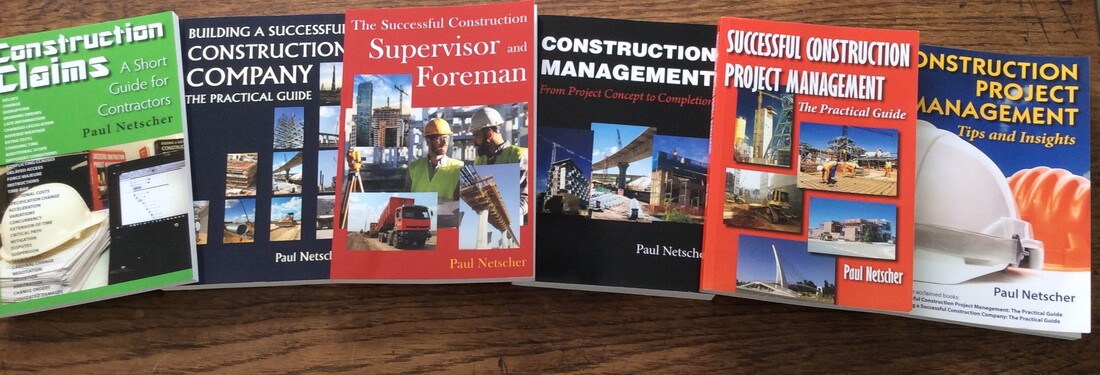
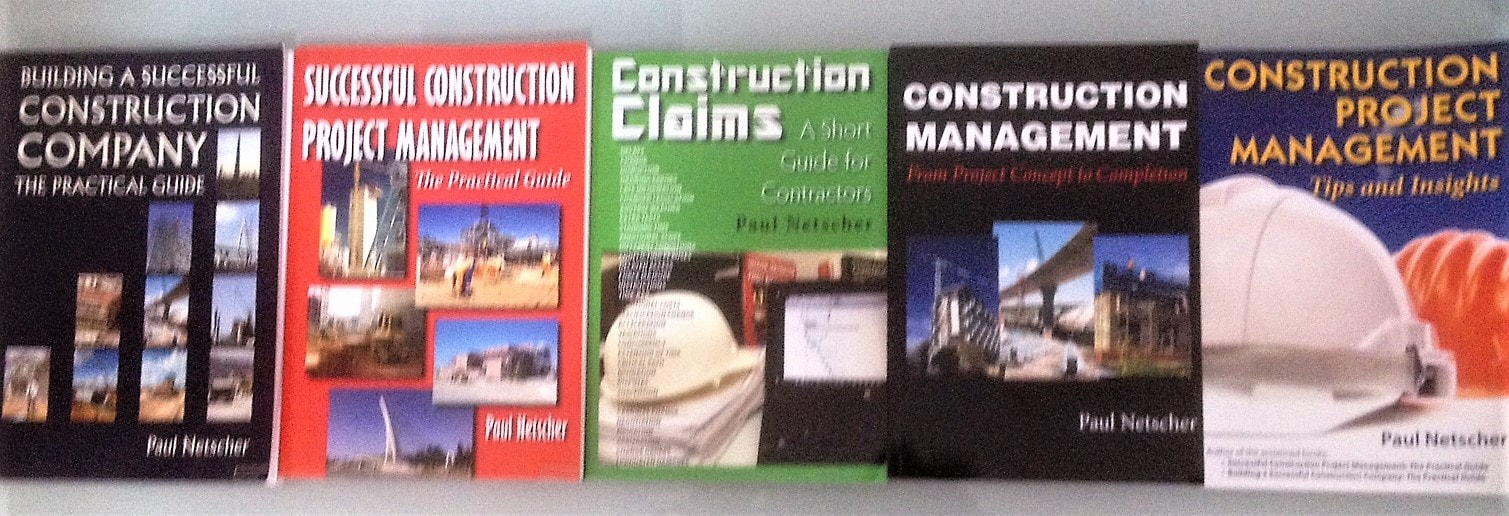


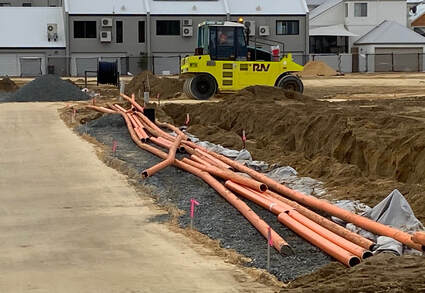

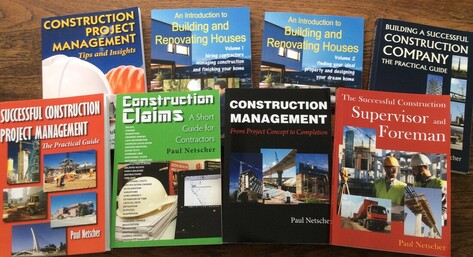
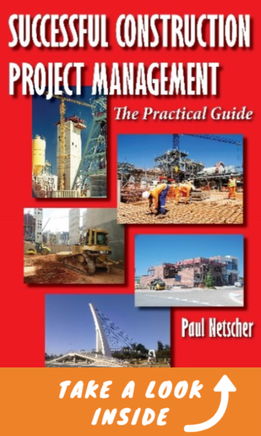


 RSS Feed
RSS Feed




